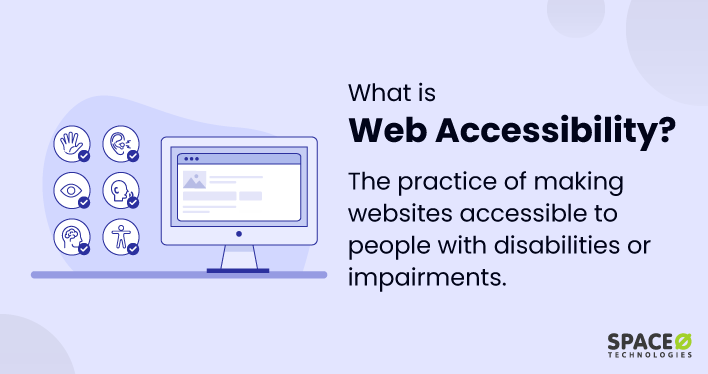Cao News Hub
Your daily source for trending news and informative articles.
Web Accessibility: A Walk in the Park for Everyone
Discover how web accessibility transforms online experiences into a walk in the park for everyone. Explore tips that make your website truly inclusive!
Understanding Web Accessibility: Why It Matters for Everyone
Understanding web accessibility is essential for creating an inclusive digital environment that serves the needs of all users, including those with disabilities. It encompasses a variety of practices and standards that ensure websites are usable by everyone, regardless of their physical or cognitive abilities. When websites are designed with accessibility in mind, they not only help people with disabilities navigate the online world more effectively, but also enhance the overall user experience for all visitors. This includes aspects such as text readability, alternative text for images, and keyboard navigation, which are crucial for providing equitable access.
Moreover, web accessibility is not just a legal or ethical obligation; it’s a smart business strategy that can significantly widen your audience. According to estimates, over a billion people worldwide live with some form of disability. By failing to make your website accessible, you risk alienating a substantial demographic and missing out on potential customers. Additionally, search engines favor sites that prioritize user experience, which means accessible design can also lead to improved SEO rankings. In short, focusing on web accessibility benefits everyone and should be a fundamental component of modern web design.

Top 5 Common Myths About Web Accessibility Debunked
When it comes to web accessibility, many myths can hinder progress towards creating an inclusive online experience. The first common myth is that accessibility is only about accommodating people with disabilities. In reality, web accessibility benefits everyone, including older adults and those experiencing temporary impairments. By ensuring our websites are accessible, we enhance usability for all users.
Another prevalent myth is that web accessibility is an added expense that only large organizations need to consider. This belief can deter smaller businesses from recognizing the importance of accessible design. However, integrating accessibility practices early in the development process can actually save time and costs in the long run and open up a wider audience for your products or services. Every website can achieve accessibility, regardless of size or budget, obliterating the myth that it’s solely a big business concern.
How to Create an Inclusive Online Experience: Best Practices for Web Accessibility
Creating an inclusive online experience is essential for ensuring that all users, regardless of their abilities, can access and engage with your website. Web accessibility refers to the practice of making web content usable for people with disabilities, which can include visual, auditory, physical, speech, cognitive, and neurological disabilities. To achieve this, it is crucial to implement best practices such as using descriptive alt text for images, ensuring sufficient color contrast between text and background, and providing keyboard navigability. By focusing on these areas, you can significantly enhance the usability of your site for a wider audience.
Another vital aspect of creating an inclusive online experience is to utilize semantic HTML and ARIA (Accessible Rich Internet Applications) landmarks. This helps assistive technologies like screen readers better interpret the content of your site. Additionally, consider employing video captioning and transcripts to make your audio-visual content accessible to users with hearing impairments. Finally, regularly testing your website with accessibility evaluation tools can help identify areas for improvement, ensuring ongoing compliance and enhancing the overall experience for all users.